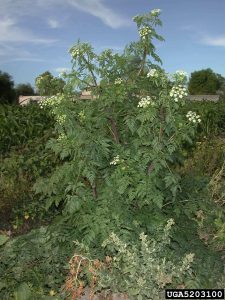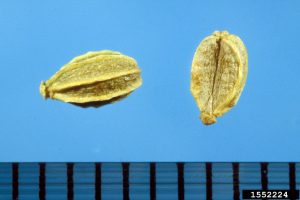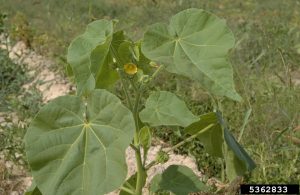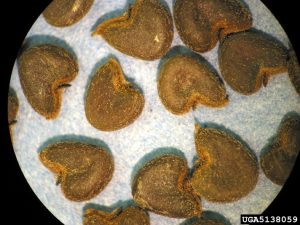Chapter 4: Seed Reproduction
4.4 Types of Dormancy: Morphological and Physical
This section will highlight various types of dormancy displayed in weeds. Again these are mechanisms which keep seeds from germinating. Moving from a state of dormancy to seed germination is controlled by both genetic factors and environmental triggers. We will describe four types of dormancies briefly and provide some examples. The first dormancy type is called morphological.
Morphological

In morphological dormancy, a seed will not germinate because it has an underdeveloped seed embryo, a morphological characteristic. After the seed is removed from the mother plant, the embryo is still not developed enough to germinate. It will take roughly 2 to 5 weeks in order for the embryo to fully develop to where germination can take place. Morphological dormancy tends to occur in tropical environments, not so much in the US Midwest region of field crop production. One example of a weed displaying this dormancy type is poison hemlock.

Physical

Another type of dormancy is called a physical dormancy, which is common in our field crop systems. With this dormancy type, the seeds have a hard seed coat, called an impermeable seed coat, which prevents water from entering into the seed. Remember, in order for the biological process of seed germination to start, the seeds absorb water (imbibe) which then triggers a cascade of different biochemical reactions. Physical dormancy is broken when there is some sort of break or rupture in the seed coat which allows water to enter the seed.

There are numerous ways that this can happen, and different seed species have different mechanisms that work better than others for breaking their dormancy. One is called scarification, where there is a scratch or crack made in the seed coat – maybe the wind blows the seed over a rock causing this. Weathering conditions can also break this dormancy. The freeze- thaw conditions over the winter can also crack the seed coat. In addition, soil microbes that are eating on the seed can create small holes that allow water to enter. Velvetleaf is a common weed which exhibits physical dormancy.